Writing is a part of everyday life.
Whether you’re writing a text, an email, or an item in a to-do list, you can’t get away from it.
But when you run your own business or agency, writing suddenly becomes so much more important.
I’m talking about:
- Email campaigns
- Direct mail advertising
- Blog content
- Newsletters
- Video scripts
- The list goes on!
And the two most common complaints I hear from insurance agents are:
- I’m a terrible writer.
- I don’t have time to write.
And I think I can help with both of those.
I don’t care if you think you’re a terrible writer. I’m going to give you a simple formula you can use to quite literally fill in the blanks and come up with a stellar written sales pitch in no time.
Following this formula will not only help you create a valuable advertisement, but it’ll save you time.
The reason writing takes so long for non-writers is 1) they spend a ton of time staring at a blank screen, and 2) they don’t know how to structure the writing efficiently.
The sales pitch formula follows 6 simple steps that works like a charm:
- Call out your audience, and be specific!
- Identify their problem.
- Talk about what they’re doing now to solve the problem and why it isn’t working.
- Introduce your solution.
- Talk about how you discovered that your solution works.
- Help them visualize what life would be like with this solution.
- Tell them how they can get it!
[If you’d be interested in a another simple formula for blog content, let me know in the comments below!]
Step 1: Call out your audience, and be specific!
The first thing you MUST do when writing ANYTHING is to call out your audience.
- Who are you writing this for?
- Who does this apply to?
In an email, it’s simple. Your audience is the person you’re emailing. Without thinking, you probably always start an email with a personal greeting. “Good morning Paul.” “Hey Laura.”
For a larger audience, you do the same thing, but you broaden the scope a bit. Let’s take a look at how I did that in this blog post.
The line “But when you run your own business or agency” immediately calls out the audience. I’m writing this for business owners.
But that’s not quite specific enough, so I go on to clarify the audience by saying, “the two most common complaints I hear from insurance agents are…”
Now, it’s clear who this article is for. It’s for insurance agents who run their own show or who manage an agency.
Step 2: Identify their problem.
When you’re writing a sales pitch, your goal is to identify a problem and offer a solution.
Every time you see a commercial, you can almost immediately identify a problem and a solution.
- Do your colored clothes ruin your whites? Buy this brand of laundry detergent.
- Do your kids keep getting bug bites? Buy this brand of insect repellent.
- Does your car get terrible gas mileage? Buy this car.
And you’re a salesman, so every single day you’re solving problems with insurance.
You may have noticed how I identified your problem in this blog post:
“And the two most common complaints I hear from insurance agents are:
- I’m a terrible writer.
- I don’t have time to write.”
It’s so simple. Whatever you’re topic is, identify the problem and express it.
Here’s an example of how a company set up a pitch for their planners by identifying the consumer’s problem.
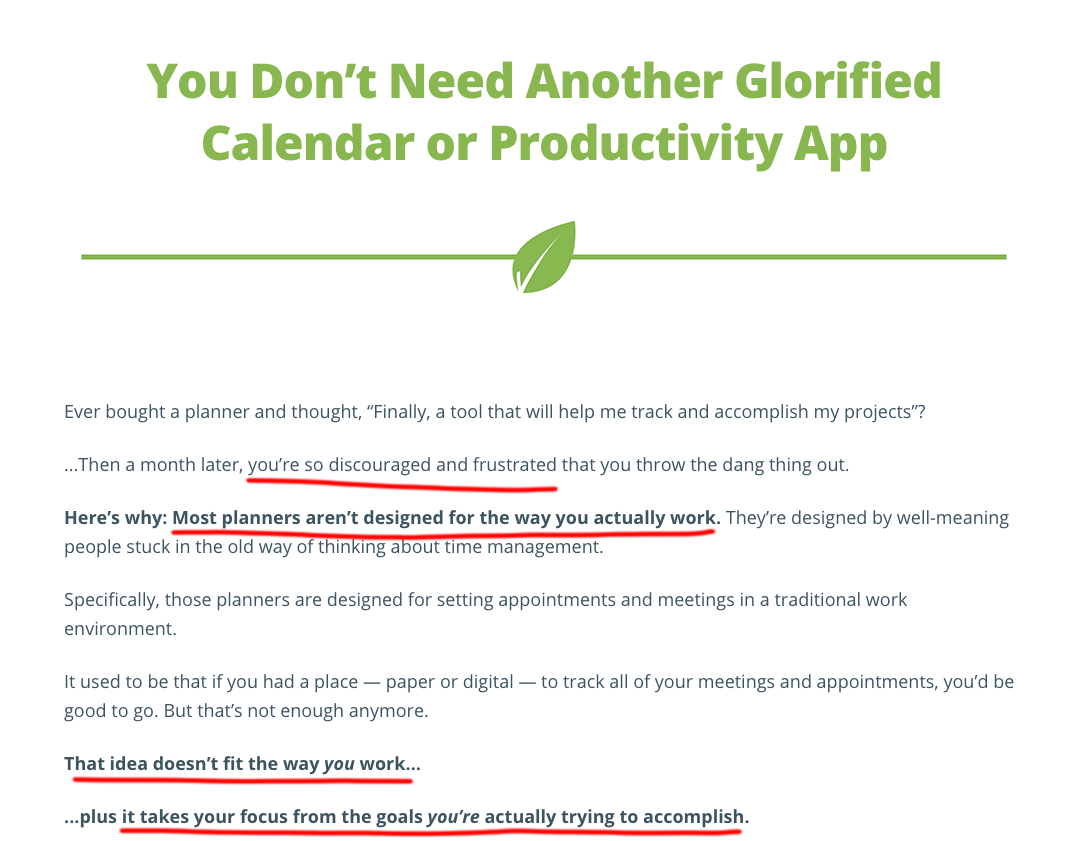
![]()
Step 3: Talk about what they’re doing now to solve the problem and why it isn’t working.
This digs a bit deeper into their pain point, or their problem. They may or may not be trying to fix the problem – they may not even realize until now that it was a problem!
But once you bring up the issue, our minds are wired to start searching for a solution.
The goal now is to explain why common solutions don’t work, and how your solution is the best.
You can see a really simple example of this on our landing page for the Client Needs Assessment.
We explain:
“You’re 10 steps ahead of the other Med Supp-only agents out there, but you’re stuck. You need something to make the “pitch” more natural and less sales-y.
Perhaps you've tried, but prospects are put off. They think you're just trying to make an extra buck off of them.”
The idea here is that you’ve tried to cross-sell in the past, but it hasn’t worked! Then, we explain why our solution is the way to go.
Step 4: Introduce your solution.
Here, you introduce your solution. The past 3 steps have effortlessly led up to this point. Now, your reader is practically dying to know what the heck your proposed solution is!
You can see the introduction on our Life Insurance Training Kit landing page. We set up the kit, and then introduce it in the “8-Part Training & Marketing Kit” section. There, we go over each item in the kit, giving a full introduction to our solution.
Here’s another example from a company that helps you create social media ads:
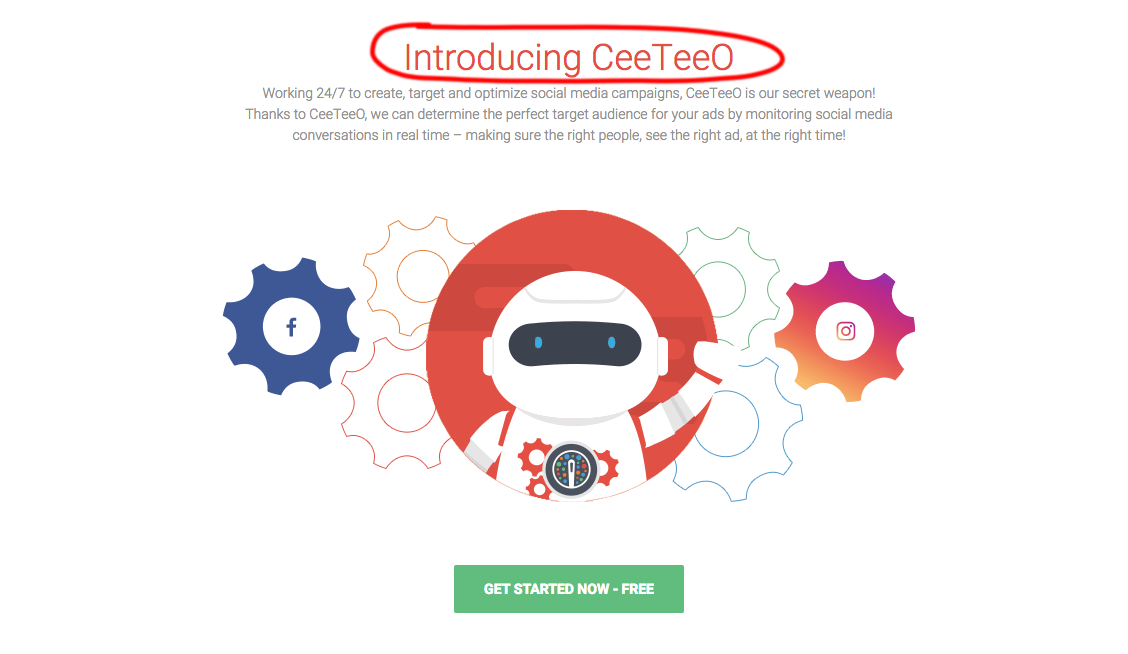
Step 5: Talk about how you discovered that your solution works.
This next part is all about building credibility. You have free range here to be personal.
On that same landing page for the Client Needs Assessment, we go on to explain how we learned that it works by including case studies of agents who use it and saw their sales grow by enormous numbers.
“One agent who has been in the business for close to 30 years saw her sales increase by 88%.
It's not like she was a bad agent, either — quite the opposite is true. She has always been a top producer, and she has been in the Top 3 in our Agent of the Year contest for the last 10 years.”
You can also build credibility by any of the following:
- A personal story of how you discovered it worked
- Testimonials
- Case studies
- Statistics
The essence of this part of the formula is simply provide proof. Give some credibility. Why should I trust that your solution is going to be the best?
Here’s an example from Northwestern Mutual:

And another from Ritual:
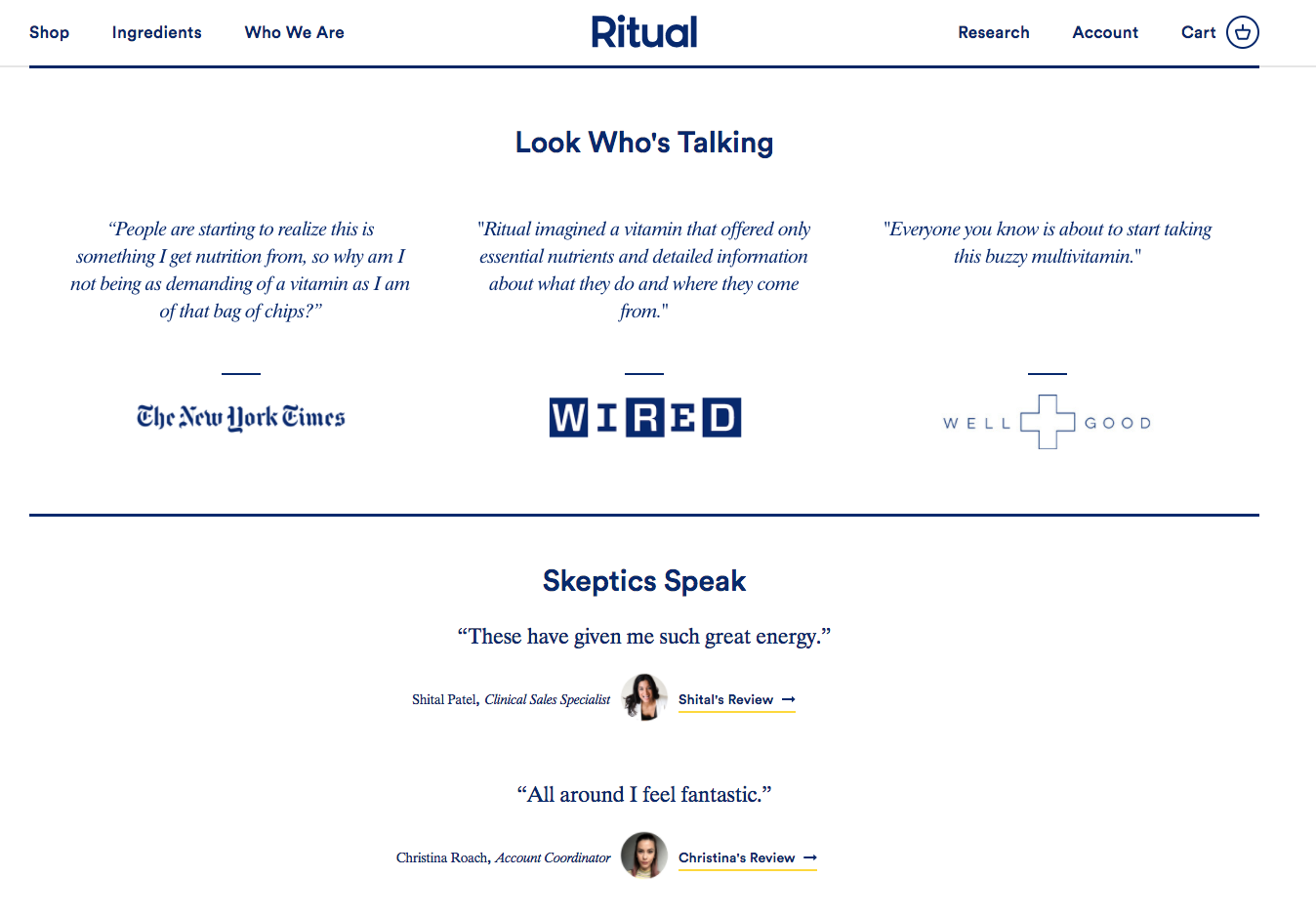
Step 6: Help them visualize what life would be like with this solution.
The word “imagine” is more powerful than you think. It sets off a chemical reaction in our brain, and suddenly we’re visualizing what life would be like with this solution.
It’s akin to reading a book or watching a movie. When something scary happens, our heart races – but we’re really just sitting on a couch or laying in bed. Our brain takes in the information and makes it feel like it’s real.
That’s why it’s so important to get your prospect to visualize what life would be like if they had your solution.
MentorBox starts out their ad with the word “Imagine” to immediately get us to picture what life would be like with their solution.
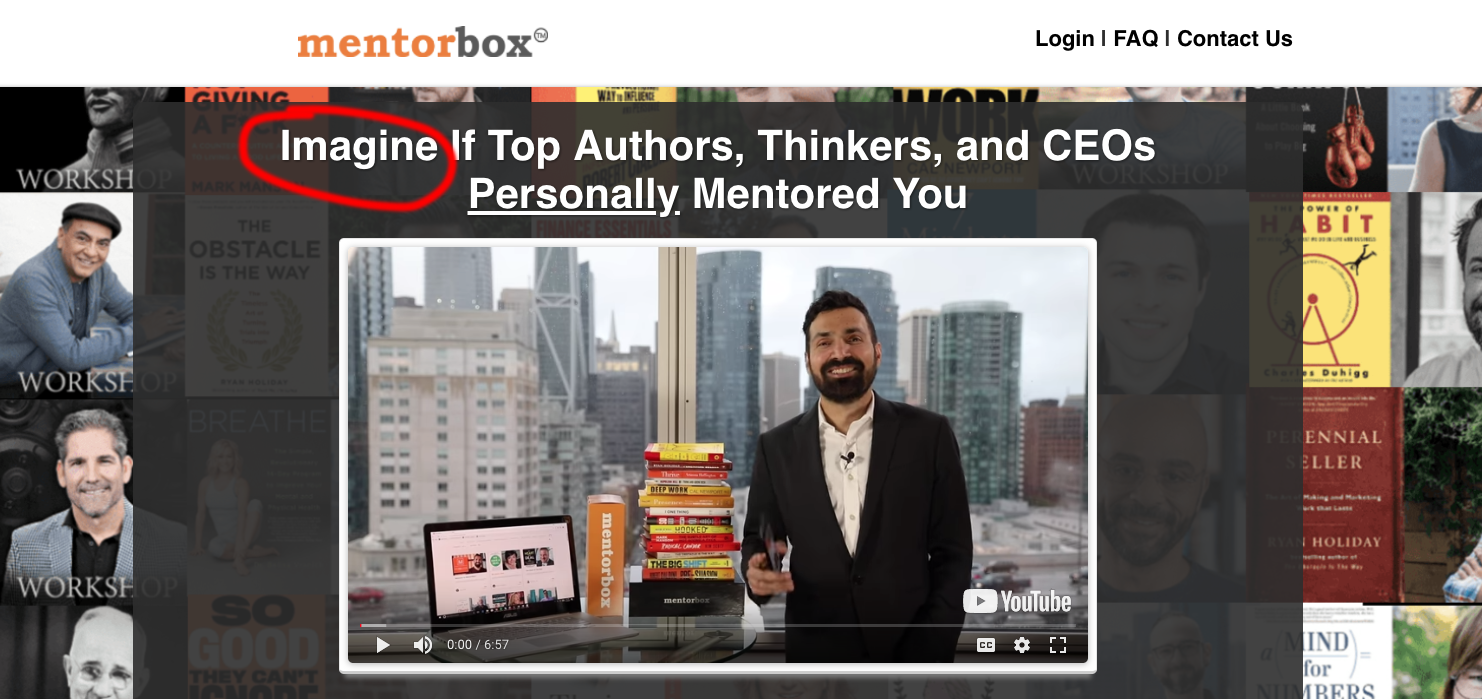
PillPack uses a testimonial to get us to see someone else’s perspective:
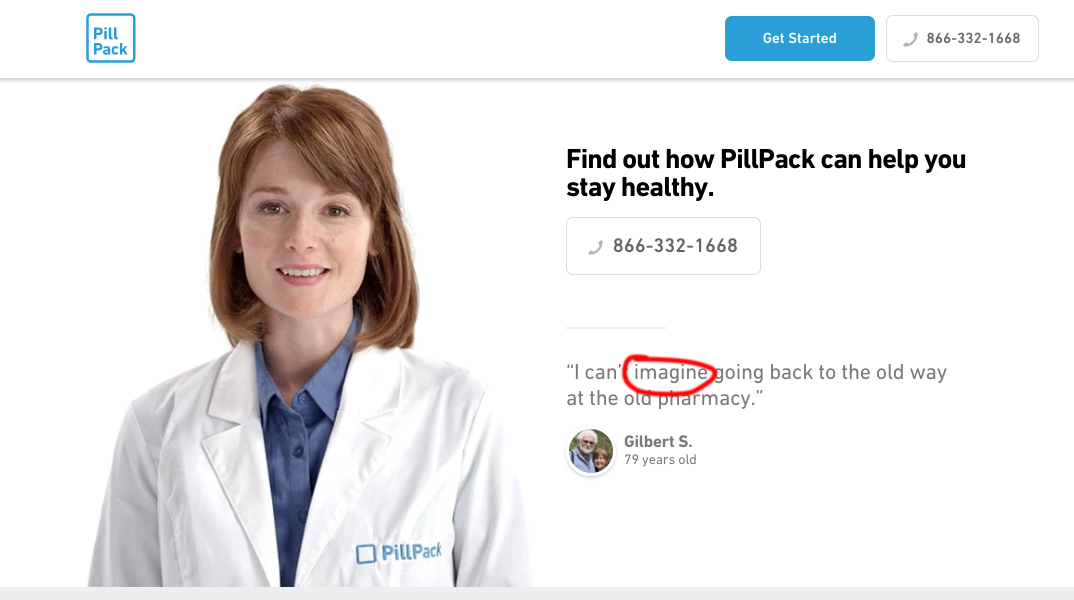
Step 7: Tell them how they can get it!
How many direct mailers do you get that explain a problem, give you a solution, and then not tell you how to get that solution?
Hopefully none.
Open any piece of mail that’s trying to sell you something, and you’ll see that everyone tells you exactly what to do.
“Call me,” “Send this bill,” “Use this coupon,” “Send this donation,” and the list goes on.
On the internet, this is typically called a “call-to-action,” and it usually takes the form of a button.
Here’s a little collage of examples:
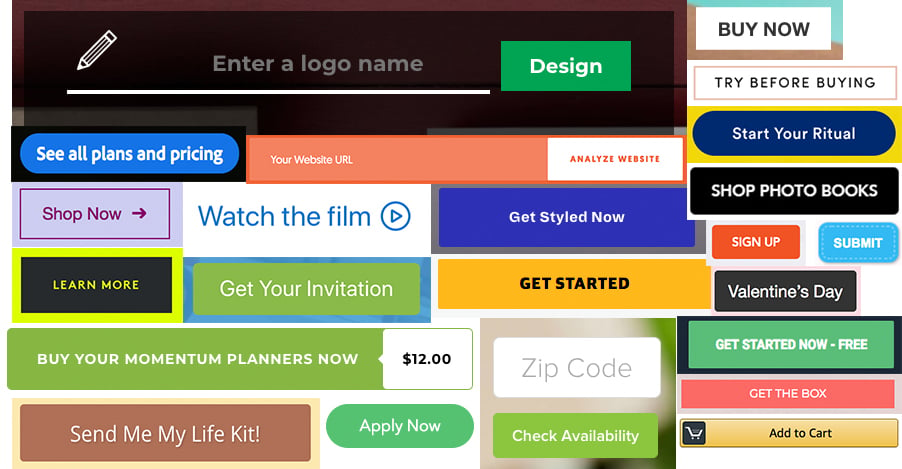
Wrapping It Up
So, when you go to write ad copy, whether it’s for a sales page, a direct mailer, an email pitch – any kind of writing that is meant to sway a consumer to buy from you – I want you to start by answering these questions:
- Who is my audience? (Be very specific!)
- What is their main problem?
- What are they doing right now to solve it, and why isn’t it working?
- What is my proposed solution?
- Why do I know my solution works?
- What would their life be like once they have my solution?
- How can they get my solution?
Your answers to these questions are the base of your sales pitch.
String them together, read it out loud, add transitions if you need to, and you now have a sales pitch that (hopefully) took you less time than it takes to check your Facebook notifications.





